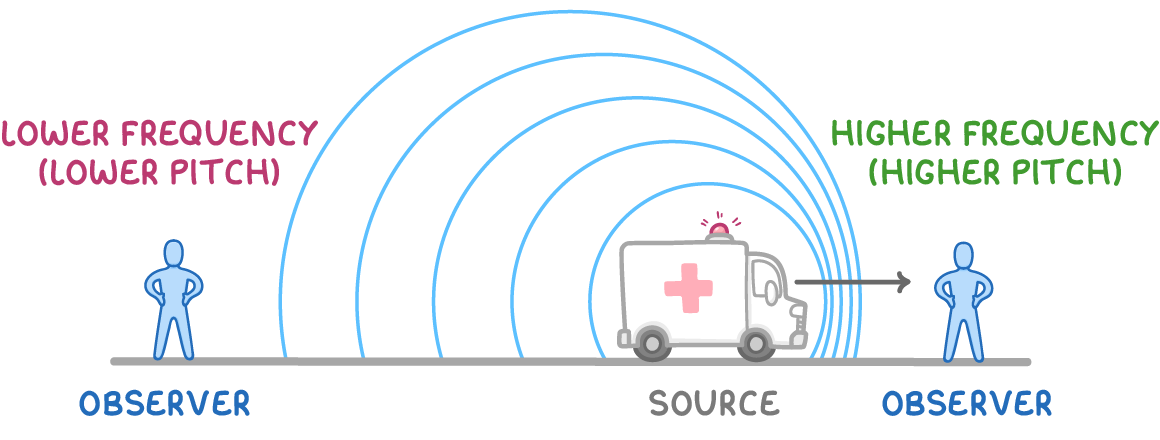Chapter 20: Cosmology
1/7
There's no tags or description
Looks like no tags are added yet.
Name | Mastery | Learn | Test | Matching | Spaced |
|---|
No study sessions yet.
8 Terms
Astronomical Unit (AU)
Average distance from Earth to Sun
1.5 × 1011 m
Light year (ly)
Distance travelled by light in a vacuum in one year
Arcseconds and arcminutes
60 arcminutes = 1 degree
60 arcseconds = 1 arcminute
1 arcsecond = 1 / 3600 degree

Parsec (pc)
The distance at which a radius of 1 AU subtends an angle of 1 arcsecond
tan (1 arcsecond) = 1AU / 1pc
= 3.1 × 1016 m = 3.26 ly

Stellar parallax
Used to determine the distance to stars that are relatively close to the Earth
Apparent shift in the position of a relatively close star against the backdrop of much more distant stars
distance between Sun and Star = 1 / p
p = parallax angle (in arcseconds)

Doppler shift
The change in frequency of a wave that is perceived by an observer when the source of the wave is moving relative to the observer

Doppler Shifts in starlight
If a galaxy is moving:
Towards the Earth: absorption lines will be blue-shifted
Move towards blue end of spectrum, wavelengths appear shorter
Away from the Earth: absorption lines will be re-shifted
Move towards red end of spectrum, wavelengths appear longer